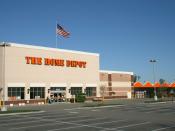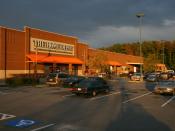As three of America's leading retailers, Home Depot, Nordstrom, and Cold Water Creek, are responsible for over $80 billion in annual sales. Retail industry analysts look for commonalities in inventory management reporting in order to track company's ability to move inventory and maximize pricing strategies and avoid having to discount obsolescent inventory thus affecting profit. Through analysis of a company's inventory management ratio, outside investors and inside management can track the number of times each year a company turns its inventory. Industries such as retail are extremely sensitive to inventory management as many retail products have short shelf lives due to cyclical inventory and technological advances.
Through an analysis of each company's inventory methodology, it was discovered that all utilized the first in-first out (FIFO) method, which values inventory by applying a cost-to-retail ratio to the ending inventory's retail value that are common among U.S. retailers.
This paper explores three diverse retail businesses and their inventory methodologies.
The first, Home Depot, is a warehouse type building, maintenance and home improvement store. Second, Nordstrom, an upscale department store is popular for its high-end apparel and renowned customer service. Lastly, Cold Water Creek, a women's apparel and accessory store that started with mail order, has moved into retail outlets in the last three years. Home Depot closed its 2004 fiscal year on January 30, 2005 while both Nordstrom and Cold Water Creek closed their 2004 fiscal year January 29, 2005. We examined the inventory costing method, the motivation for the choice, the inventory turnover ratio and the effect of the change in inventories on cash flow from operations.
Inventory Methods
All three retail companies use the First-In-First-Out (FIFO) inventory method for its stores. The FIFO method assumes that the earliest goods purchased are the first goods sold and the last goods purchased...


